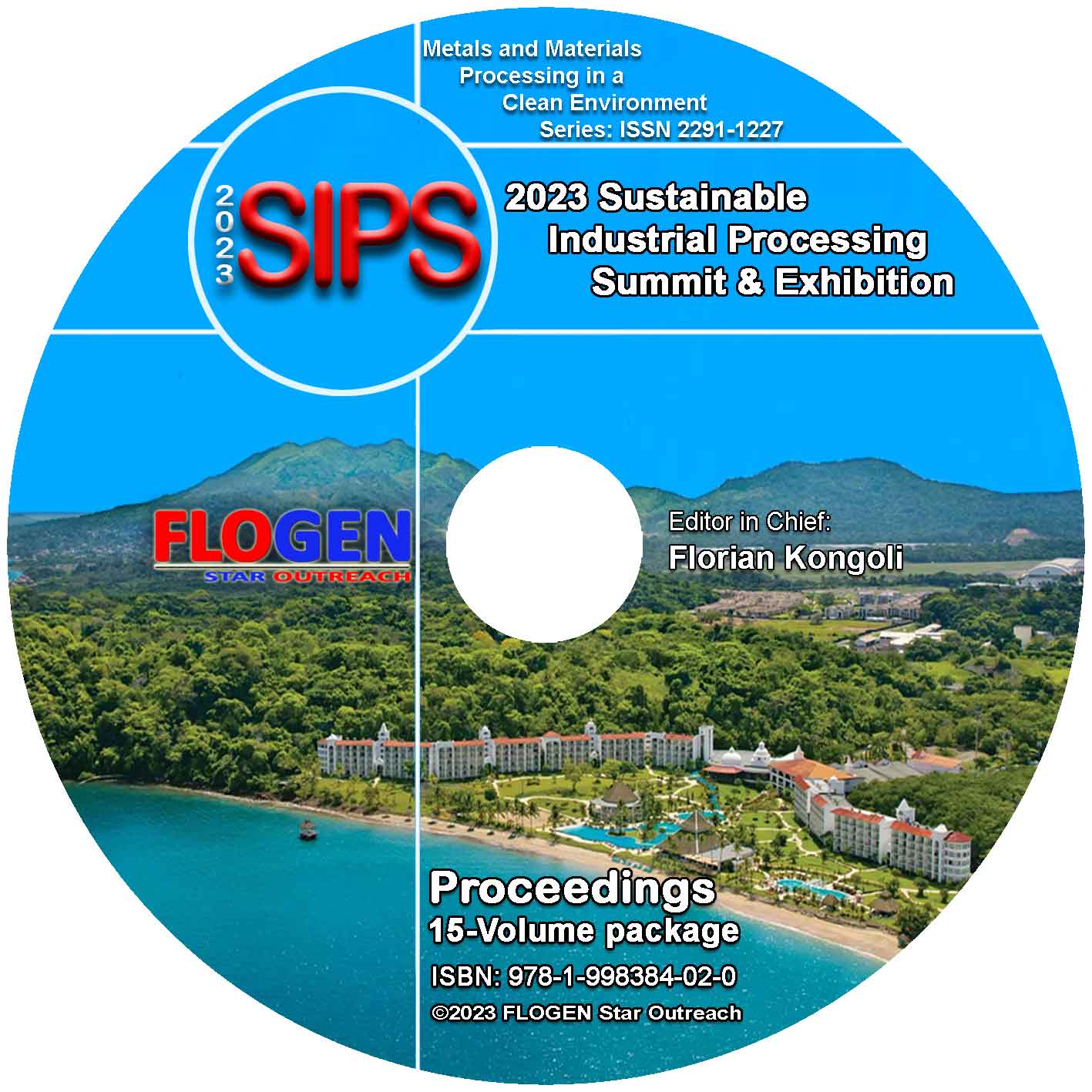2023-Sustainable Industrial Processing Summit
SIPS2023 Volume 4. Echegoyen Intl. Symp / Nanomaterials for Future Energy Demands
| Editors: | F. Kongoli, M.P. Brzezinska, M.A. Alario-Franco, F. Marquis, M.S. Noufal, E.Palomares, J.M. Poblet, D.M. Guldi, A.A. Popov, A.R. Puente Santiago, B. Raveau, D. G. Rodriguez, S. Stevenson, T. Torres, A. Tressaud, M. de Campos |
| Publisher: | Flogen Star OUTREACH |
| Publication date: | 21 December 2023 |
| Pages: | 166 pages |
| ISBN: | 978-1-989820-78-0 (CD) |
| ISSN: | 2291-1227 (Metals and Materials Processing in a Clean Environment Series) |

CD shopping page
NANOFLUORIDES IN MATERIAL SCIENCES, ENERGY SYSTEMS, PHOTONICS, AND MEDICINAL CHEMISTRY
Alain Tressaud1;1ICMCB-CNRS, UNIVERSITY BORDEAUX, Pessac, France;
Type of Paper: Regular
Id Paper: 78
Topic: 16
Abstract:
Inorganic fluorine-based compounds are found today as nano-components in many applications, including energy storage and conversion, photonics, electronics, medicinal chemistry, and more [1]. The strategic importance of nano-fluorinated materials can be illustrated by several examples drawn from various scientific fields. In the field of energy storage, fluorinated carbon nanoparticles (F-CNPs) are tested as active materials in primary lithium batteries, while 3d-transition metal fluorides and oxyfluorides, mainly iron-, cobalt- and titanium- based have been proposed as electrodes in secondary batterie(reversible) s. In all-solid-state batteries, materials derived from fluorite- (CaF2) or tysonite- (LaF3) structural types can be used as solid electrolytes, provided the F- anions are highly mobile. Nanocrystalline rare-earth fluorides are currently used for their photoluminescent properties at the micro- or nanoscale.
Functionalized nanoparticles and nanostructured compounds based on solid-state inorganic fluorides are used in many other advanced fields, including fluorinated graphene quantum dots (FGQDs), solar cells (DSSC, QDSSC), transparent conducting films (TCF), solid state lasers, nonlinear optics (NLO), UV absorbers, etc.
Their role is also decisive in medicine and biotechnologies [2], where doped rare-earth fluoride nanocrystals serve as luminescent biomarkers thanks to their up- and down-conversion properties, allow fluorine labeling of nanoparticles and in-vivo 19F NMR. Relevant nanotherapeutics include photodynamic therapy (PDT), luminescent thermometry, radiotracers for positron emission tomography (PET), theranostic nano-agents that incorporate both imaging probes and therapeutic media, and are therefore capable of carrying out both diagnosis and therapy within the same nano-object.
References
Keywords:
Batteries; Carbon; Characterization; Conductivity; Electrolytes; Electron; Materials; Nanomaterials; Nanoparticles; Nanophosphors; Synthesis;References:
[1] “Progress in Fluorine Scienceâ€, A. Tressaud Series Editor, Elsevier, Vol. 1, “Photonic & Electronic Properties of Fluoride Materialsâ€, A.Tressaud & K. Poeppelmeier Eds. (2016). // Vol. 2 “New Forms of Fluorinated Carbonsâ€, O. Boltalina & T. Nakajima, Eds. (2016). // Vol. 3 “Modern Synthesis Processes and Reactivity of Fluorinated Compoundsâ€, H. Groult, F. Leroux & A. Tressaud, Eds. (2017). // Vol. 4 “Fluorine & Health: Pharmaceuticals, Medicinal Diagnostics, and Agrochemicalsâ€, G. Haufe, & F. Leroux Eds. ( 2018).[2] Fluoride Nanoparticles for Biomedical Applications, M.S.Pudovkin, R.M.Rakhmatullin, in: “Nanoparticles in Medicineâ€, Shukla, A. (ed), Springer (2020). https://doi.org/10.1007/978-981-13-8954-2_5